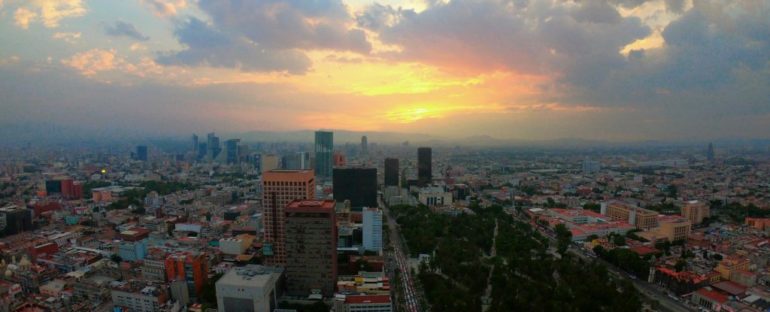Mexico City, the most populous metropolis in North America, has sunk too low for us to save it, according to new research.
After centuries of water drainage from underground aquifers, the lake bed on which this city sits has grown increasingly dry, causing the clay sheets to compress and crack at a largely unstoppable rate.
Not only does this put infrastructure at risk, it also threatens water security for millions of people.
Despite putting an end to groundwater drilling in the 1950s, 115 years of leveling data and 24 years of GPS data has found the city is continuing to drop at roughly the same rate.
In the northeast sector of the city – an area that is still not yet urbanized and where sinking rates have so far gone undetected – researchers have found the land is depressing at a rate of up to 50 centimeters a year.
“Even if water levels were to be raised, there is no hope for recovering the great majority of the lost elevation and the lost storage capacity of the aquitard,” the authors write. An aquitard is a region that restricts groundwater flowing from one aquifer to another.
Imagine a footprint in the wet sand. When the foot is removed and water seeps back in, the imprint begins to fill once again, kind of like a depressed pillow reinflating.
The continued weight of a sprawling city and the steady tapping of groundwater, however, makes further sinking largely inevitable. The fact that this submersion is also occurring in regions not yet weighed down by urbanization is especially worrisome.
“If you put heavy buildings on that kind of ground, and use shallow foundations, the soil compacts,” geotechnical engineer Eddie Bromhead from Kingston University London told The Guardian in 2004.
“So that, along with removing the water, is why Mexico City is such a mess.”
Scientists first noticed Mexico City was sinking in the early 1900s, at a rate of roughly 8 centimeters a year. By 1958, that had jumped to 29 centimeters a year, which led to a decision to cap the amount of water that could be brought up from wells in the city center.
After that, the rate of sinking returned to less than 9 centimeters a year, but in the past two decades, higher resolution data has revealed a consistent rate of up to 40 centimeters a year in the city’s historic downtown.
Using modern data, researchers now estimate the clay sheets underneath Mexico City could ultimately compress by 30 percent, and while that won’t happen for another 150 years or so, there’s little we can do to stop it.
Today, the upper clay of the city is already 17 percent compacted, and the authors say these changes are “almost fully irreversible.”
Of course, not all parts of the city are sinking at the same rate. Some areas have already sunk below the original lake bed, while others remain on slightly higher ground.
While this lack of uniform sinking might sound like a good thing, it ultimately leads to a higher risk of intense surface fracturing, which can damage infrastructure and cause contamination of water supplies.
Rain and spring water running off the mountains surrounding Mexico City have left the sunken city especially prone to flooding. As the clay underneath it further sinks and cracks, the authors worry this strong downward flow of water will ultimately percolate through to the groundwater, introducing pollutants or sewerage.
Currently, 70 percent of the city’s drinking water comes from groundwater extraction wells, which continues to deplete the region’s aquifers. If this water becomes contaminated it would “eventually set the stage for a water pollution crisis”, the authors say.
Without a widespread system for reusing wastewater or collecting rainwater, the city is struggling to meet demand. Already, 1.1 million houses in the sprawling city lack access to safe water, and most of the ground’s fissuring and fracturing is occurring in areas of low socioeconomic status.
Those residents wealthy enough can afford to move to less vulnerable areas or buy their water from elsewhere. But if drastic action is not taken and soon, the rest will be forced to sink with the land.
The study was published in JGR Solid Earth.



